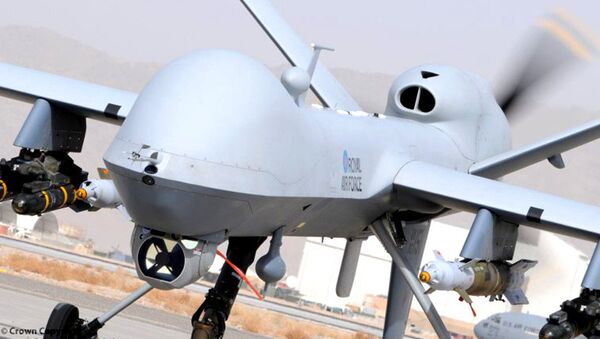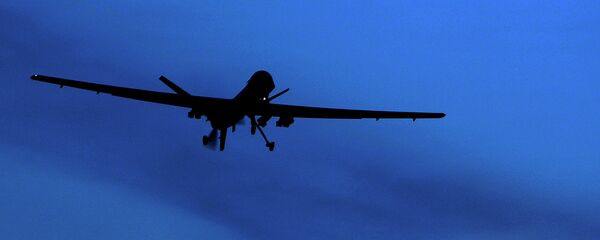According to a USAF fact sheet, the USAF has an inventory of 93 Reaper UAVs, as of September 2015. The Air Force announced in 2015 that the General Atomics Aeronautical Systems MQ-1 Predator, the force’s chief weapon in UAV air strikes, would be retired by 2019. The USAF is also interested in adding new UAVs to its burgeoning drone program.
The MQ-9 Reaper’s main purpose will be to strike enemy targets remotely. The fact sheet points out, "The MQ-9 Reaper is an armed, multi-mission, medium-altitude, long-endurance remotely piloted aircraft that is employed primarily against dynamic execution targets and secondarily as an intelligence collection asset." The Creech Air Force Base in Nevada currently houses the USAF’s fleet of Reapers.
The fact sheet adds, "Given its significant loiter time, wide-range sensors, multi-mode communications suite, and precision weapons — it provides a unique capability to perform strike, coordination, and reconnaissance against high-value, fleeting, and time-sensitive targets." The unmanned vehicle can also be equipped with up to four laser-guided Air-to-Ground Missile (AGM)-114 Hellfire missiles.
During a recent multilateral ballistic missile defense training exercise, two MQ-9 Reaper UAVs showcased the ability to track enemy missiles. The exercise included Aegis destroyers from Japan, the US and South Korea.
Currently, the US military is facing a shortage of drone pilots, and in 2016 the Air Force is looking to add 344 new pilots. This is part of a new three-year plan by the Pentagon to increase the number of UAV flights.
The USAF currently flies some 60 sorties a day. That number is expected to rise to 70 by year’s end. According to the Air Force Times, the US Army flies ten combat patrols a day. The United States has conducted between 404-409 strikes in Afghanistan and 424 drone strikes in Pakistan since 2004, with an estimated 4,472 to 6,506 casualties across both nations.




